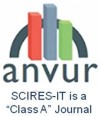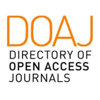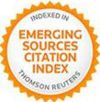The impact of virtual tours on museum exhibitions after the onset of covid-19 restrictions: visitor engagement and long-term perspectives 
Abstract
Keywords
Full Text:
PDFDOI: http://dx.doi.org/10.2423/i22394303v11n1p151
References
REFERENCES
Argyriou, L., Economou, D., & Bouki, V. (2020). Design methodology for 360° immersive video applications: the case study of a cultural heritage virtual tour. Personal and Ubiquitous Computing, 24(6), 843-859. doi:https://doi.org/10.1007/s00779-020-01373-8
Barbieri, L., Bruno, F., & Muzzupappa, M. (2017). Virtual museum system evaluation through user studies. Journal of Cultural Heritage, 26, 101-108. doi:https://doi.org/10.1016/j.culher.2017.02.005
Bonacini, E. (2015). A pilot project with Google indoor Street View: a 360° tour of “Paolo Orsi” museum (Syracuse, Italy). SCIentific RESearch and Information Technology, 5(2), 151-168. doi:https://doi.org/10.2423/i22394303v5n2p151
Bouvier, P., Lavoué, E., & Sehaba, K. (2014). Defining Engagement and Characterizing Engaged-Behaviors in Digital Gaming. Simulation & Gaming, 45(4-5), 491-507. doi:https://doi.org/10.1177/1046878114553571
Cesário, V. (2019). Guidelines for combining storytelling and gamification: which features would teenagers desire to have a more enjoyable museum experience? Paper presented at the Extended Abstracts of the 2019 CHI Conference on Human Factors in Computing Systems, Glasgow, Scotland Uk. https://doi.org/10.1145/3290607.3308462
Che Mohd Yusoff, R., Azlina, A., & Halimah Badioze, Z. (2011). Evaluation of user acceptance of mixed reality technology. Australasian Journal of Educational Technology, 27(8), 1369-1387. doi:https://doi.org/10.14742/ajet.899
Dalgarno, B., & Lee, M. J. W. (2010). What are the learning affordances of 3-D virtual environments? British Journal of Educational Technology, 41(1), 10-32. doi:https://doi.org/10.1111/j.1467-8535.2009.01038.x
Daniela, L. (2020). Virtual museums as learning agents. Sustainability, 12(7), 1-24.
Danks, M., Goodchild, M., Rodriguez Echavarria, K., Arnold, D., & Griffiths, R. (2017, 11-13 June). Interactive storytelling and gaming environments for museums: the interactive storytelling exhibition project. Paper presented at the Technologies for E-learning and Digital Entertainment: Second International Conference, Edutainment 2007, Hong Kong, China.
Davis, F. D. (1989). Perceived Usefulness, Perceived Ease of Use, and User Acceptance of Information Technology. MIS Quarterly, 13(3), 319-340. doi:https://doi.org/10.2307/249008
Davis, F. D., Bagozzi, R. P., & Warshaw, P. R. (1989). User Acceptance of Computer Technology: A Comparison of Two Theoretical Models. Management Science, 35(8), 982-1003. doi:https://doi.org/10.1287/mnsc.35.8.982
El-Said, O., & Aziz, H. (2021). Virtual Tours a Means to an End: An Analysis of Virtual Tours’ Role in Tourism Recovery Post COVID-19. Journal of Travel Research, 1-21. doi:https://doi.org/10.1177/0047287521997567
Erbil, Ö. (2018). Çanakkale villagers rush to newly opened Troy Museum. Hürriyet Daily News. Retrieved from https://www.hurriyetdailynews.com/canakkale-villagers-rush-to-newly-opened-troy-museum-138025
Errichiello, L., Micera, R., Atzeni, M., & Del Chiappa, G. (2019). Exploring the implications of wearable virtual reality technology for museum visitors' experience: A cluster analysis. International Journal of Tourism Research, 21(5), 590-605. doi:https://doi.org/10.1002/jtr.2283
Evrard, Y., & Krebs, A. (2018). The authenticity of the museum experience in the digital age: the case of the Louvre. Journal of Cultural Economics, 42(3), 353-363. doi:https://doi.org/10.1007/s10824-017-9309-x
Feng, X. (2020). Curating and Exhibiting for the Pandemic: Participatory Virtual Art Practices During the COVID-19 Outbreak in China. Social Media + Society, 6(3), 1-6. doi:https://doi.org/10.1177/2056305120948232
Hammady, R., Ma, M., & Strathearn, C. (2020). Ambient information visualisation and visitors’ technology acceptance of mixed reality in museums. Journal on Computing and Cultural Heritage (JOCCH), 13(2), 1-22. doi:https://doi.org/10.1145/3359590
Hammady, R., Ma, M., & Temple, N. (2016). Augmented Reality and Gamification in Heritage Museums. Paper presented at the Second Joint International Conference on Serious Games, JCSG 2016, Brisbane, QLD, Australia.
Heerink, M., Kröse, B., Wielinga, B., & Evers, V. (2008). Enjoyment intention to use and actual use of a conversational robot by elderly people. Paper presented at the Proceedings of the 3rd ACM/IEEE international conference on Human robot interaction, Amsterdam, The Netherlands.
Huang, Y.-C., Backman, S. J., Backman, K. F., & Moore, D. (2013). Exploring user acceptance of 3D virtual worlds in travel and tourism marketing. Tourism Management, 36, 490-501. doi:https://doi.org/10.1016/j.tourman.2012.09.009
Huhtamo, E. (2010). On the Origins of the Virtual Museum. In R. Parry (Ed.), Museums in a digital age (pp. 121-135). London-New York: Routledge.
Jin, L., Xiao, H., & Shen, H. (2020). Experiential authenticity in heritage museums. Journal of Destination Marketing & Management, 18, 1-11. doi:https://doi.org/10.1016/j.jdmm.2020.100493
Kabassi, K. (2017). Evaluating websites of museums: State of the art. Journal of Cultural Heritage, 24, 184-196. doi:https://doi.org/10.1016/j.culher.2016.10.016
Kabassi, K., Amelio, A., Komianos, V., & Oikonomou, K. (2019). Evaluating Museum Virtual Tours: The Case Study of Italy. Information, 10(11), 1-11. doi:https://doi.org/10.3390/info10110351
Karacan, E., & Resta, G. (2020). Virtual exhibition and visitor experience: how digital storytelling enhances online exhibition spaces. In Y. Aksoy & E. Duyan (Eds.), Contemporary issues in architecture: Ecology, urban environment, experience (pp. 135-154). Istanbul: DAKAM.
Kim, M. J., Lee, C.-K., & Jung, T. (2018). Exploring Consumer Behavior in Virtual Reality Tourism Using an Extended Stimulus-Organism-Response Model. Journal of Travel Research, 59(1), 69-89. doi:https://doi.org/10.1177/0047287518818915
Luo, S.-S., Shedd, B. A., & Nanetti, A. (2018). Enhancing the experience of the western Xia imperial tombs heritage site (PRC, Ningxia) through animated installations. SCIentific RESearch and Information Technology, 8(1), 1-32. doi:https://doi.org/10.2423/i22394303v8n1p1
Marangunić, N., & Granić, A. (2014). Technology acceptance model: a literature review from 1986 to 2013. Universal Access in the Information Society, 14(1), 81-95. doi:https://doi.org/10.1007/s10209-014-0348-1
Mattern, S. (2014). Animated spaces. The Senses and Society, 9(2), 131-150. doi:https://doi.org/10.2752/174589314X13953118734742
Muñoz, H. (2016, 17-22 July). The interaction in an interactive exhibition as a Design-Aesthetics-Experience relationship. Paper presented at the 18th International Conference, HCI International, Toronto, Canada.
Network of European Museum Organisations - NEMO. (2020). Survey on the impact of the COVID-19 situation on museums in Europe. Final Report. Retrieved from https://www.ne-mo.org/fileadmin/Dateien/public/NEMO_documents/NEMO_COVID19_Report_12.05.2020.pdf
Network of European Museum Organisations - NEMO. (2021). Follow-up survey on the impact of the COVID-19 pandemic on museums in Europe. Final Report. Retrieved from https://www.ne-mo.org/fileadmin/Dateien/public/NEMO_documents/NEMO_COVID19_FollowUpReport_11.1.2021.pdf
Pallud, J., & Straub, D. W. (2007). Real vs. Virtual: A Theoretical Framework for Assessing the Role of Authenticity in Visitor Interactions with Museum Technologies. Paper presented at the Americas Conference on Information Systems (AMCIS), Keystone, Colorado, USA.
Povroznik, N. (2018, 7-9 March). Virtual museums and cultural heritage: Challenges and solutions. Paper presented at the Digital Humanities in the Nordic Countries 3rd Conference, Helsinki, Finland.
Povroznik, N. (2020, 21-23 October). Digital History of Virtual Museums: The Transition from Analog to Internet Environment. Paper presented at the Digital Humanities in the Nordic Countries 5th Conference, Riga, Latvia.
Prensky, M. (2001). Digital Natives, Digital Immigrants Part 1. On the Horizon, 9(5), 1-6. doi:https://doi.org/10.1108/10748120110424816
Schiopu, A. F., Hornoiu, R. I., Padurean, M. A., & Nica, A.-M. (2021). Virus tinged? Exploring the facets of virtual reality use in tourism as a result of the COVID-19 pandemic. Telematics and Informatics, 60, 1-20. doi:https://doi.org/10.1016/j.tele.2021.101575
Schubert, T., Friedmann, F., & Regenbrecht, H. (2001). The Experience of Presence: Factor Analytic Insights. Presence: Teleoperators and Virtual Environments, 10(3), 266-281. doi:https://doi.org/10.1162/105474601300343603
Solima, L. (2017). Museums, accessibility and audience development. In M. Cerquetti (Ed.), Bridging theories, strategies and practices in valuing cultural heritage (pp. 225-240). Macerata: eum edizioni università di macerata.
Sun, H., & Zhang, P. (2006). Causal Relationships between Perceived Enjoyment and Perceived Ease of Use: An Alternative Approach. Journal of the Association for Information Systems, 7(9), 618-645. doi:https://doi.org/10.17705/1jais.00100
Tallon, L. c., & Walker, K. (Eds.). (2008). Digital technologies and the museum experience: handheld guides and other media. Plymouth: AltaMira Press.
Vermeeren, A. P. O. S., Calvi, L., & Sabiescu, A. (Eds.). (2018). Future museum experience design: Crowds, ecosystems and novel technologies. Cham: Springer.
Wagler, A., & Hanus, M. D. (2018). Comparing Virtual Reality Tourism to Real-Life Experience: Effects of Presence and Engagement on Attitude and Enjoyment. Communication Research Reports, 35(5), 456-464. doi:https://doi.org/10.1080/08824096.2018.1525350
Article Metrics
Metrics powered by PLOS ALM
Refbacks
- There are currently no refbacks.
Copyright (c) 2021 Giuseppe Resta, Fabiana Dicuonzo, Evrim Karacan, Domenico Pastore

This work is licensed under a Creative Commons Attribution-NonCommercial-NoDerivatives 4.0 International License.
SCIRES-IT, e-ISSN 2239-4303
Journal founded by Virginia Valzano





